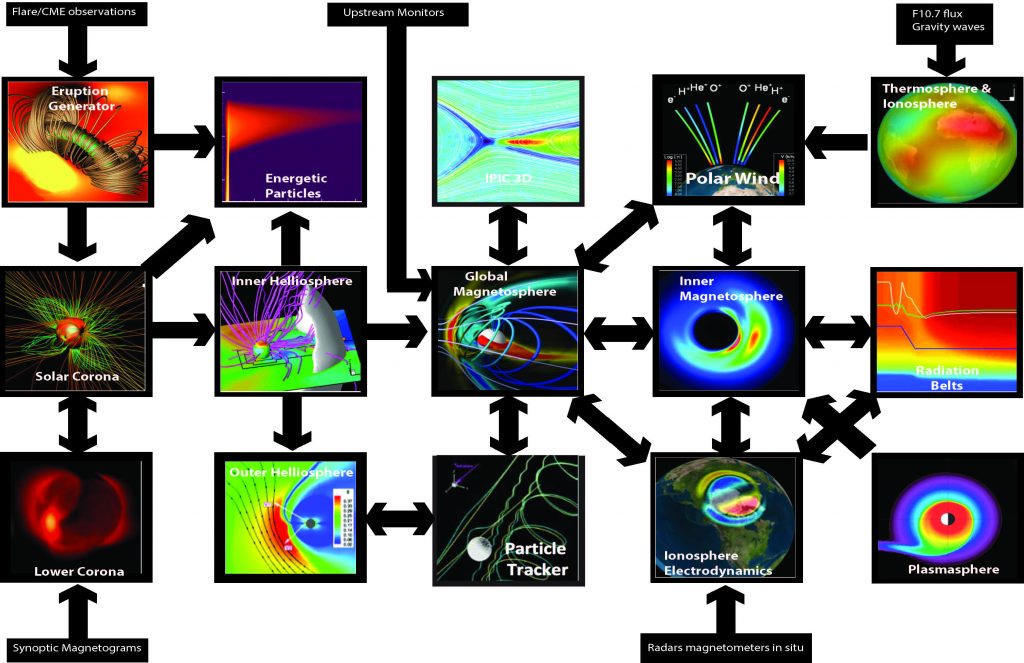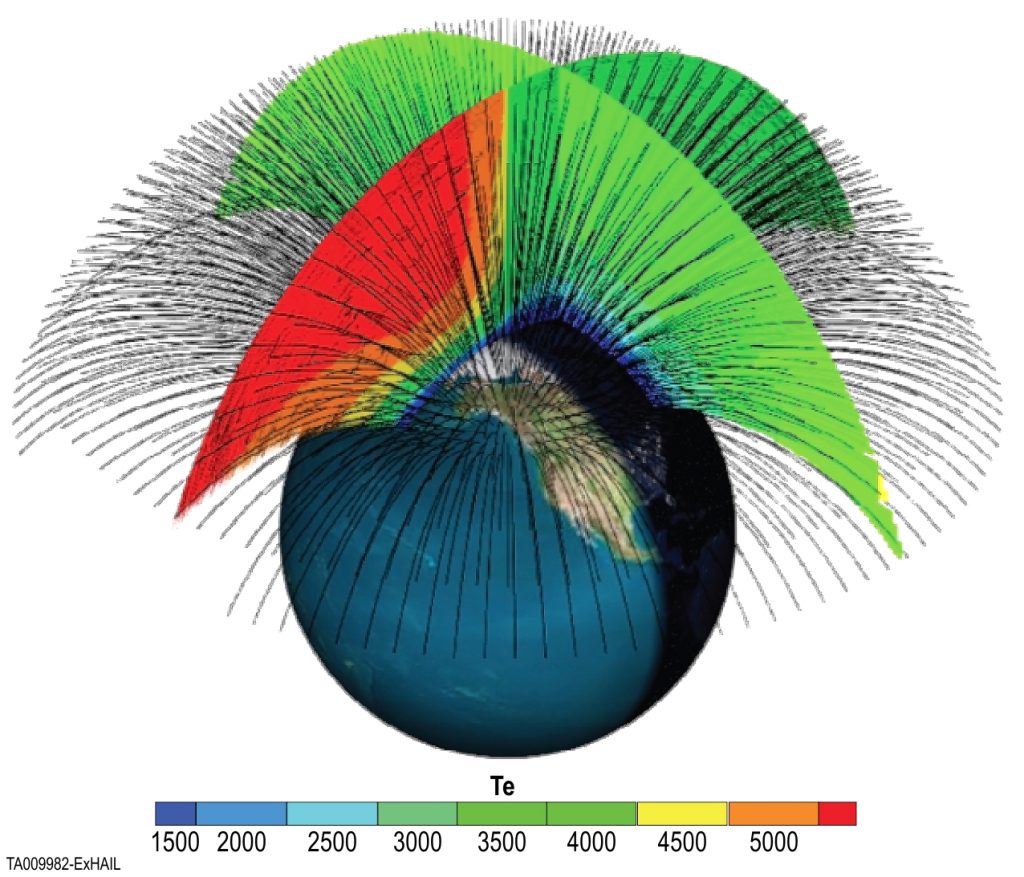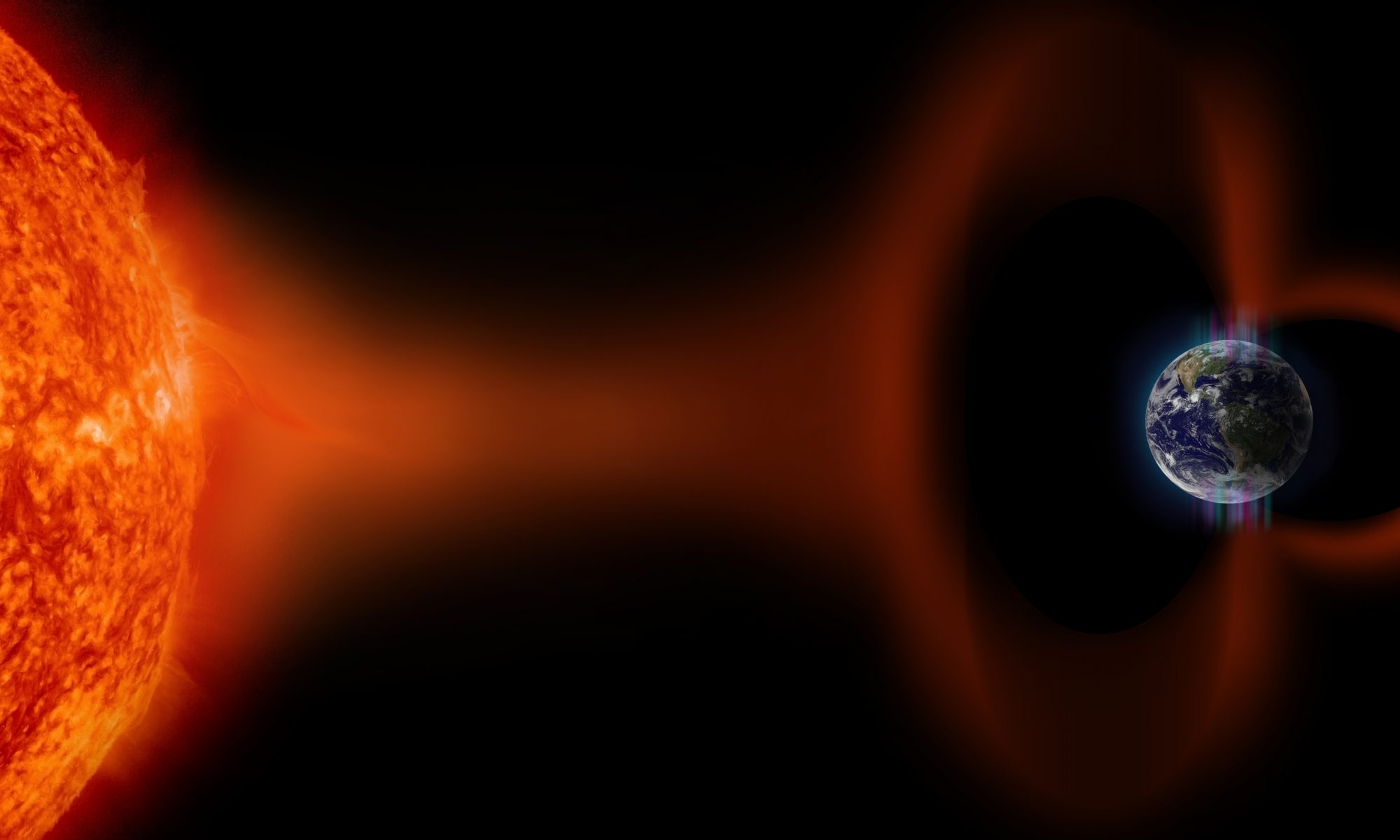Space Weather Modeling Framework (SWMF)

The Space Weather Modeling Framework (SWMF), a high-performance, flexible computational framework designed for simulating the space environment, allows studying these complex, multi-scale space plasmas and their interactions on a system level. SWMF integrates numerical models from numerous physics domains and can be customized to self-consistently simulate physical processes and coupled domains from the solar surface to the upper atmosphere of the Earth. Each domain can be represented with one of several alternative physics models, and the coupling of these modules makes the SWMF a unique and powerful tool in simulating the dynamic evolution and interactive physical dependencies within and between coupled systems of the space environment. This promotes a global understanding of the processes driving space weather, and advancing us toward physics-based prediction of the near-Earth environment. SWMF allows for enhanced modeling and predictive capabilities and has been selected as the Geospace Model(s) at NOAA’s Space Weather Prediction Center.
Hot Electron and Ion Drift Integrator (HEIDI)

The physics of the Earth’s inner magnetosphere is highly complicated since this region contains overlapping particle distributions over large range of energies. The motions (gradient and curvature drifts) of these dierent particle populations are energy dependent, therefore standard single fluid treatment of this plasma cannot provide adequate description of the inner magnetosphere. To accurately simulate this closed field lines region, a kinetic model solving the energy-dependent particle flows of hot ions and electrons is needed.
Hot Electron and Ion Drift Integrator (HEIDI) is a kinetic drift model that describes the morphology and leading mechanisms that control and lead to the development of magnetospheric currents. HEIDI computes the time-dependent, gyration- and bounce-averaged kinetic equation for the phase-space density of one or more ring current species (e, H+, He+, N+, O+) on an equatorial based grid. HEIDI is part of SWMF Inner Magnetosphere module and self consistantly coupled with several other models within teh SWMF.
Polar Wind Outflow Model (PWOM)

The polar wind consists of outflowing plasma from the high latitude ionosphere into the low pressure magnetosphere, along open magnetic field lines. By the time it reaches the magnetosphere, this plasma undergoes transitions from chemical to diffusion dominance, from a collision dominated to collisionless regime, and from subsonic to supersonic flow. While H+ and He+ outflow can be largely explained by classical polar wind processes, the outflow of heavy ions, such as O+ and N+, is more complicated. The heavy ionospheric ions are gravitationally bound and require additional energy to overcome Earth’s gravitational potential.
The Polar Wind Outow Model (PWOM) is a first principle model that simulates the ionospheric outflow by calculating the vertical transport of O+, He+, H+ ions and electrons by solving the gyrotropic transport equations along multiple magnetic field lines and provides a three dimensional picture of the ionospheric outow. Each eld-line is tracked and advected around the polar cap and this motion is determined through a combination of the co-rotation and the drift velocity.
